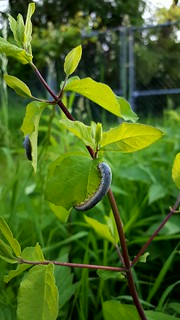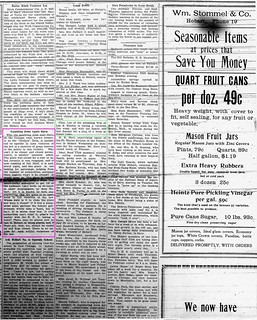
(Click on image to enlarge)
Hobart Gazette, Aug. 3, 1923.
Maybe I printed it out for the sake of the next story down, about Hobart travelers to Valparaiso being advised to take the Ainsworth route rather than the Yellowstone Trail, which was undergoing repairs.
The story in the middle column about the Gary hospital has so many familiar names that I can't talk about them all, but the one that jumps out at me is "W. Wagoner" — this reminds me that while reading the March 28, 1913 Gazette on microfilm recently (looking for other stuff), I came across the mention of Wilmont Wagoner, which in turn reminded me of that mysterious W.N. Wagoner who briefly operated the Ainsworth saloon and whose first name has eluded me. Well, now I have a theory: "W.N." = Wilmont Nelson. Can't prove it, of course, but who cares? Here's Wilmont Nelson Wagoner's death notice from 1938:

(Click on image to enlarge)
Hammond Times, Sept. 11, 1938.
That story about the giant still at McCool is pretty interesting, too.
But getting back to the 1923 newspaper — over in the next column, George Hagerty's obituary reminds me that I've been seeing that name (Hagerty) here and there without really knowing who those people were. I think the son Albert is the one who lost his young wife to the Spanish influenza in January 1919. I wonder if this family has a connection to the George Haggerty/Hegerty who worked in the Reuben Bridle household in 1910 and attended Reuben's funeral in 1922? — but the age of that George in 1910 (24) doesn't match up to George Hagerty's son mentioned in the obituary, who was born in 1902 per the 1910 Census (which shows George Sr. living and working on his own farm).
Below that, Albert Orcutt's father has died.












